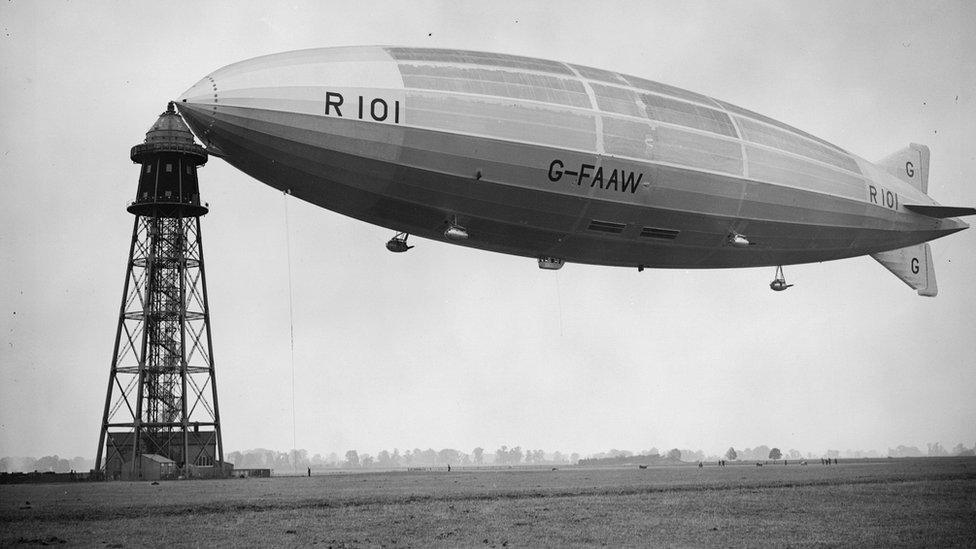The Shropshire man aboard the doomed R101 airship
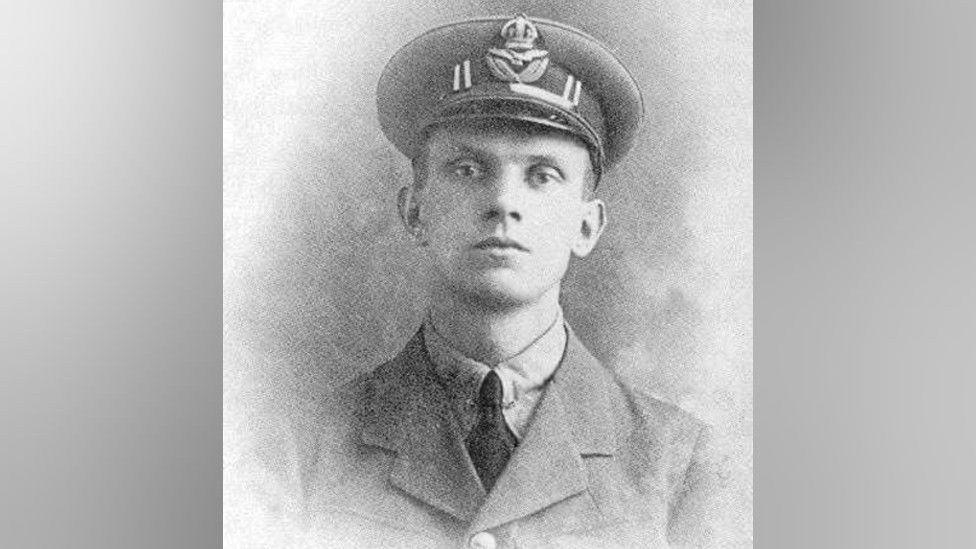
Frederick Michael Rope was an engineer by trade
- Published
Frederick Michael Rope was born in Shrewsbury in 1888, attending the town's school and later becoming an accomplished engineer.
During World War One, he joined the Royal Naval Air Service and contributed significantly to the SS Zero airship project, before joining the RAF and working extensively on airship design.
It was considered the golden age of airships, and Michael played a crucial role in developing the R101, a 777ft long steerable passenger ship which would attempt to fly to India in 1930.
Tragically, his life was cut short when he perished on board the R101 when it crash-landed in France, 95 years ago.
The R101 was assembled in Cardington, near Bedford, with work starting in 1926.
It was seen as a lavish floating hotel - there was a smoking room and it had promenade decks where passengers could look outside the airship through windows while sitting on deckchairs.
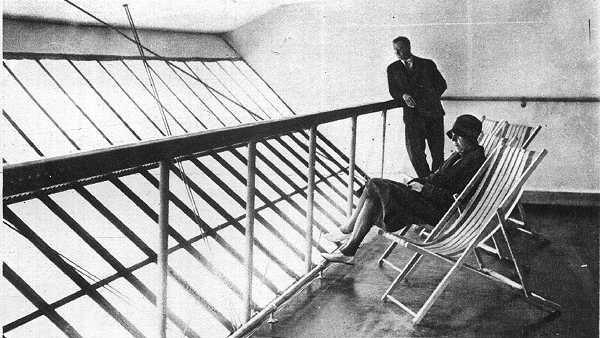
The airship had promenade decks where passengers could sit and observe the view
"He [Michael] was on the design team, he came up with some really nice ingenious ideas," said Alastair Lawson, chairman of the Airship Heritage Trust.
"He was a very very quiet designer, he was part of the main design team but he came up with some really good ideas for things - like gasbag wiring, ballasting and things like that - with regards to how the ship was going to effectively be designed and built to make it as light as possible."
The airship was huge - "About the size of an ocean liner," Mr Lawson told the BBC.
"They were designed to fly between 1500ft to 2000ft."
The crafts' 15 test flights were not always smooth sailing - many problems presented themselves, including issues with engine coolers and holes in gasbags.
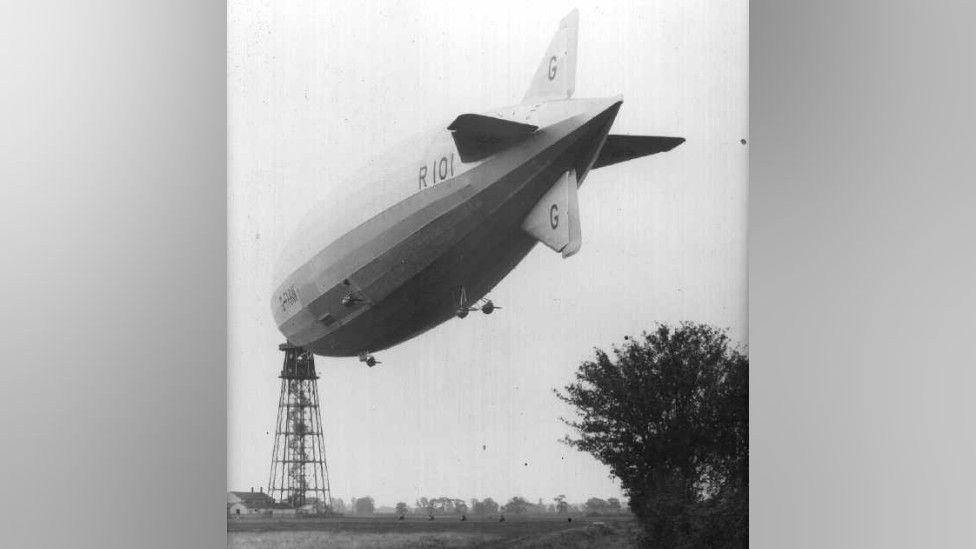
The R101 was 777ft (236m) long
The R101 set off for Karachi (then in India) on 4 October 1930, from Cardington.
Fifty four passengers and crew were on board, including Frederick Michael Rope.
The weather was not great, but not bad enough to cancel the voyage - there would be cloud and moderate winds over northern France.
At 02:00 BST, witnesses suggested the ship began to have difficulty with gusting winds.
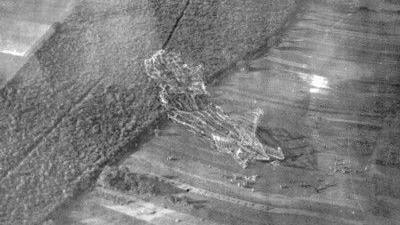
The crash site near Beauvais, France
Mr Lawson said because of a rain storm, the outer cover and nose of the airship started to split, as well as two gasbags tearing - meaning the nose got heavy and began to droop.
"[Frederick] Michael Rope had gone forward to inspect what was happening… sadly, what we believe, is the ship made a dive," he said.
It crash landed near Beauvais, France, on 5 October, and a fuel leak caused a fire.
"The gas bags caught fire along the length of the ship and the whole thing went up in an unfortunate fiery inferno," said Mr Lawson.
Most on board were asleep - 48 of 54 died, including Frederick.
An inquiry revealed multiple factors contributed to the crash, including design flaws, insufficient testing, and the decision to proceed with the flight despite known issues.
In the months following his death, Frederick's widow, Doreen, gave birth to their only child - Crispin Michael Rope.
Doreen never remarried and died in 2003, while Crispin died in 2021.
Marga, Frederick's sister, was a stained glass artist, and often used her brother to model St Michael in her windows.
He appears as the saint in one of the windows at Holy Family and St Michael Church, external, Kesgrave, Suffolk, which was built in memory of Frederick and those who died alongside him, external.
Get in touch
Tell us which stories we should cover in Shropshire
Follow BBC Shropshire on BBC Sounds, Facebook, external, X, external and Instagram, external.
Related topics
- Published4 October 2020
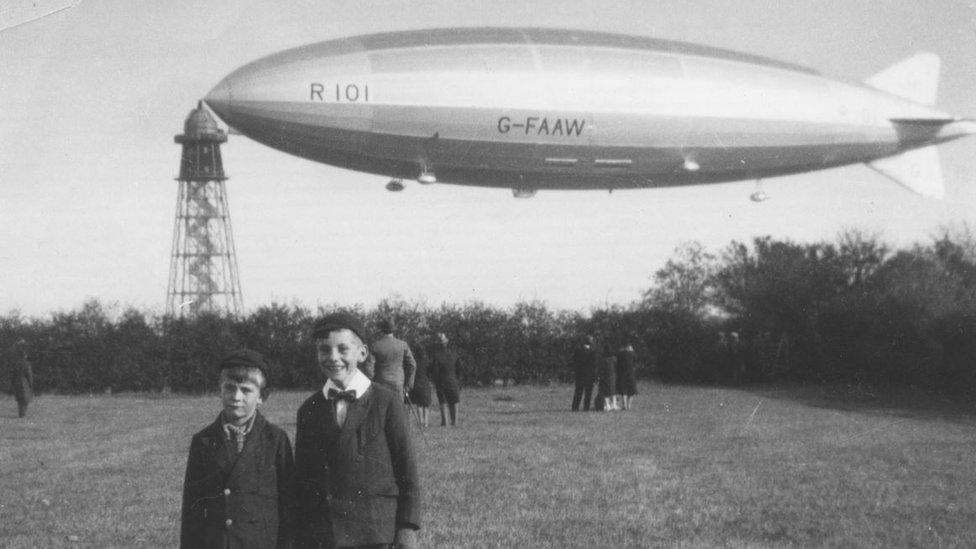
- Published3 October 2018
